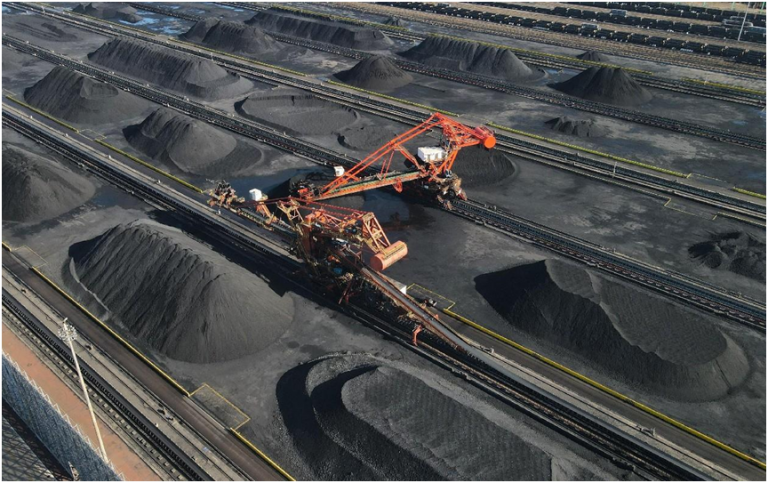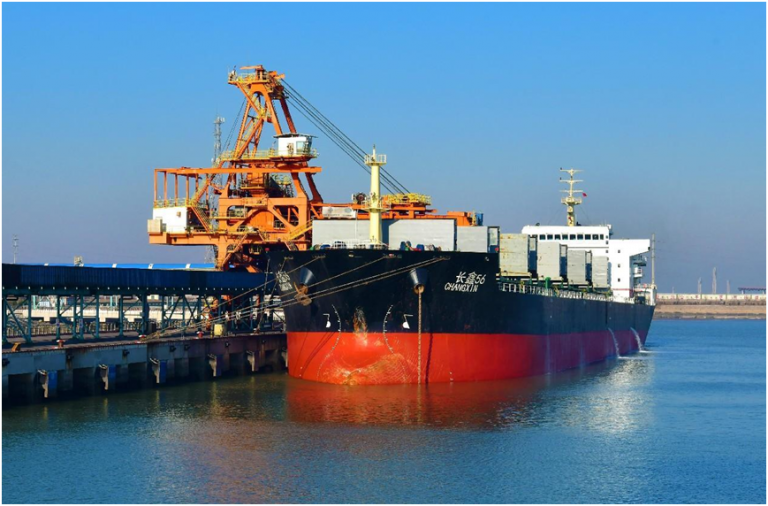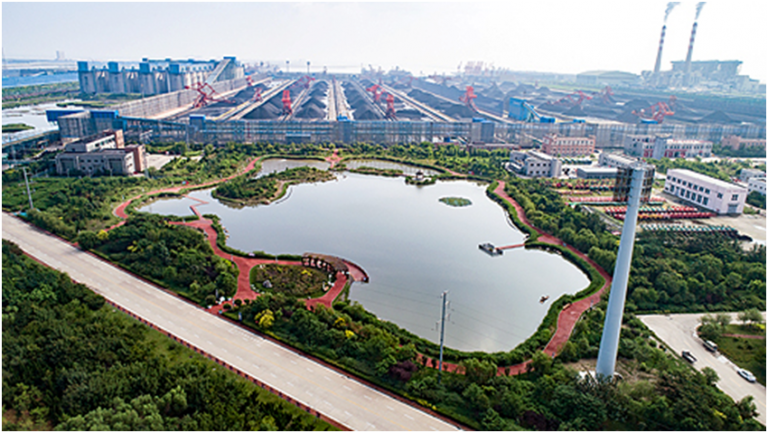
By Shao Yuzi, People’s Daily
Sea breeze was coming to a coal terminal at the Port of Huanghua on the west coast of Bohai Bay in Cangzhou, north China’s Hebei province.
As coal trains from northern Shanxi province successively arrived at the terminal, their hopper cars were dragged to the first stop there – the rotary car dumpers.
Zhou Runsheng, a technician who has been working for ten years at the car dumper shed of the terminal, told People’s Daily that the dumpers were once a big polluter.
“When hopper cars were rotated, coal dust would be kicked up. Those who wore white shirts would soon see their shirts turn grey,” Zhou said.
Today, thanks to new technologies developed by the port, the coal dust that could have been kicked up when cars are rotated is wrapped by extremely small water droplets with a diameter of only a few micrometers.
“We have four rotary car dumpers, and each of them can unload 8,000 tons of coal per hour. That means over 100 million tons every year. Given this, the car dumper shed is still kept clean,” Zhou said.

The Port of Huanghua is an important coal port in China. It has ranked first in the country in terms of coal throughput for four consecutive years. However, coal dust pollution had been a huge challenge that hindered the development of the port.
To tackle the challenge, the Port of Huanghua embraced intelligentization and built a whole-process dust suppression system.
The port upgraded every procedure of coal processing, including dumping, piling, and loading, said Huai Quan, manager of the production supply center of the company that runs the port, adding that the application of environmental protection technologies helped the company tackle the challenges of dust pollution at the coal terminal.
According to Huai, 17 environmental monitoring sites, which update data every minute, have been set up at the coal terminal. The data in and outside the terminal are almost the same, the manager added.
Apart from coal dust pollution treatment, the Port of Huanghua also made efforts to advance water conservation so as to turn itself into a green hub.
Freshwater is a valuable resource for the Port of Huanghua, which sits on a coastal salt marsh.
“The coal terminal’s operation consumed over 3.7 million cubic meters of freshwater each year, and the figure even rose after environmental protection rules became more strict,” Huai told People’s Daily.
To solve the problem, the port planned “two lakes and three wetlands,” Huai said.
According to him, the “two lakes” take ballast water on cargo ships from south China and surface runoff collected in the rainy season, respectively.

The ballast water “lake” receives 1.1 million to 1.5 million cubic meters of freshwater each year, and the runoff “lake” 400,000 cubic meters, Huai noted.
The “three wetlands” refer to three sewage disposal stations that dispose of wastewater generated by dust-extraction units and other devices. They can purify over 2.05 million cubic meters of sewage on an annual basis. The coal slime settled during the treatment is made into coal briquettes that earn an extra 9 million yuan ($1.31 million) for the port each year.
The “two lakes and three wetlands” were transformed from dumping areas and idle lands. They are interconnected and form a complete set of water recycling systems.
“The water is gradually reutilized in production, which cuts the cost of freshwater consumption by over 19 million yuan each year,” Huai told People’s Daily.
The sufficient and recyclable freshwater in the “two lakes and three wetlands” is now nurturing the plants in the port and attracting various fish and bird species, turning ashy terminals into a beautiful “coastal garden.”
“We also set up a technological innovation team that puts green inventions to all links of production, so as to maximumly reduce human labor, cover the whole port with power supply and keep enhancing green development,” said Dong Chuanbo, manager of the environmental protection department of the company that runs the Port of Huanghua.
According to Dong, the port will further promote the collaboration among and upgrading of photovoltaic, energy storage, and hydrogen-producing systems for better green and low-carbon transition.










